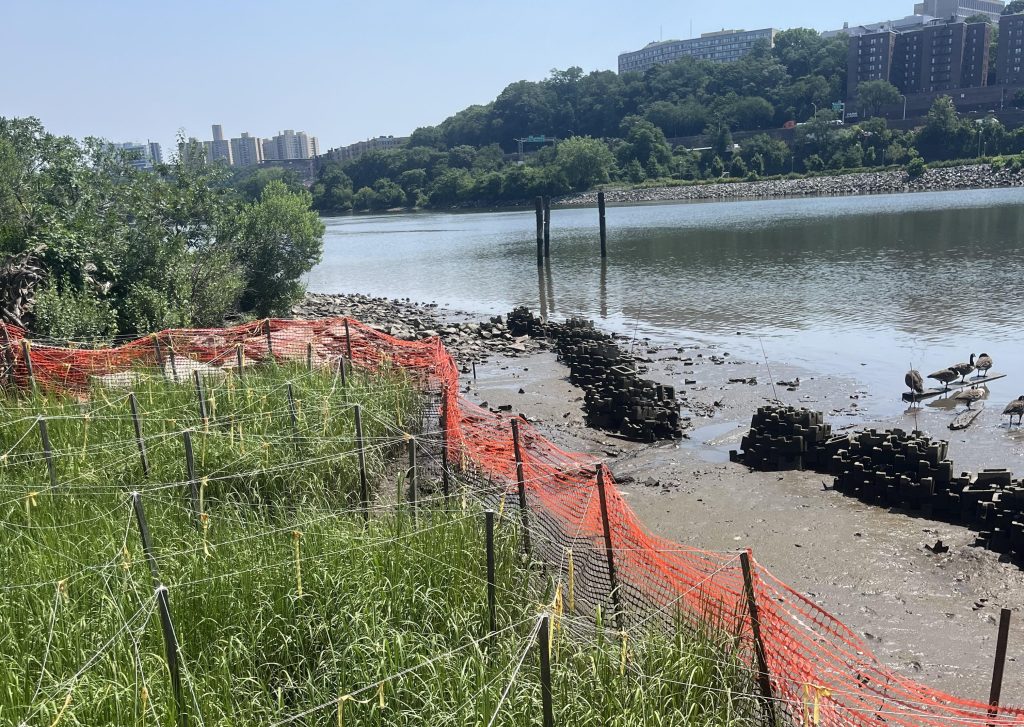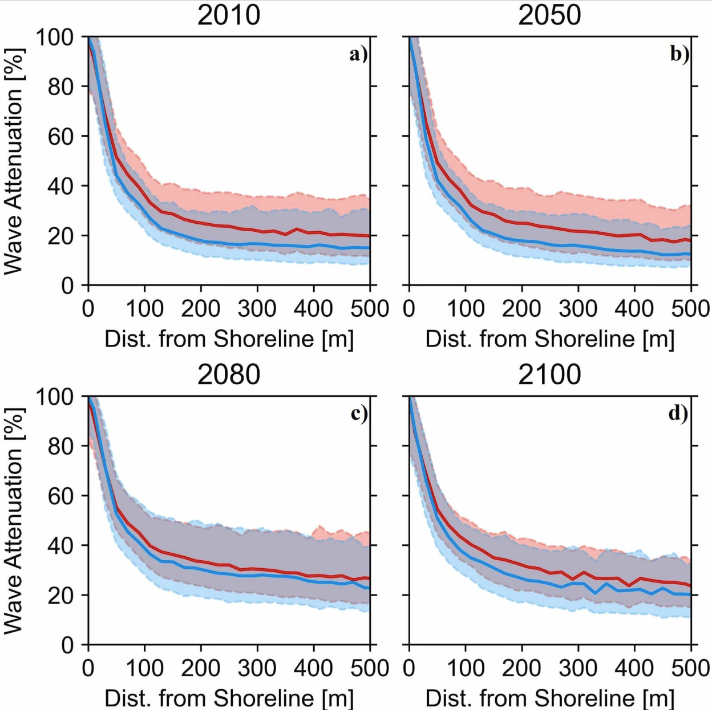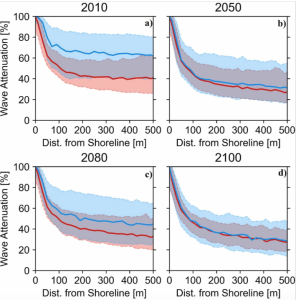
NCCOS-funded researchers found that native and invasive marsh grasses in Chesapeake Bay provide different degrees of flood protection depending on storm severity, but that marshes alone may not protect against coastal flooding in the future. Actions that increase marsh slope and height above sea level may be needed to enable marshes to continue protecting coastlines from strong waves during extreme weather events in the future.
The researchers developed wave-attenuation models of Maryland marshes composed of native smooth cordgrass (Spartina alterniflora) and invasive common reed (Phragmites australis) that predict how much the marshes reduce waves under a high-intensity hurricane and a low-intensity winter storm. The models explored how marshes dominated by each plant type would decrease storm wave energy under increasing sea level rise scenarios.
Under hurricane conditions, models showed that marshes composed of the invasive common reed decreased wave intensity more effectively than native smooth cordgrass marshes. During more frequent low-intensity storms, researchers found just the opposite: native cordgrasses reduced more wave energy than invasive-dominated marshes. However, the models showed that the differences between how marsh types perform may disappear with projected sea level rise by the year 2100, when both types of marshes are estimated to provide similar protections and only during moderate storms.


Based on study findings, coastal managers should consider their priorities for salt marsh maintenance and restoration. Salt marshes made up of native cordgrass are better at filtering pollutants and are home to more species than marshes that have been taken over by invasive common reeds. However, if current wave attenuation benefits are the primary focus for a site, managers may decide not to target invasive removal without a plan for wave attenuation, especially given economic and ecological costs of removing invasive common reeds. Living shorelines, sills, and sediment placement, in addition to species management, are long-term considerations to help maximize the protective function and health of salt marsh shorelines in Chesapeake Bay.
The project is led by George Mason University, and is funded through the NCCOS Effects of Sea Level Rise (ESLR) Program. Project partners include the Maryland Department of Natural Resources and The Nature Conservancy. Read the publication here.
Citation: Cassalho, F., de Souza de Lima, A., Coleman, D. J., Henke, M., Miesse, T. W., de A. Coelho, G., & Ferreira, C. M. (2023). Projecting future wave attenuation by vegetation from native and invasive saltmarsh species in the United States. Regional Studies in Marine Science, 68, 103264. https://doi.org/10.1016/j.rsma.2023.103264
